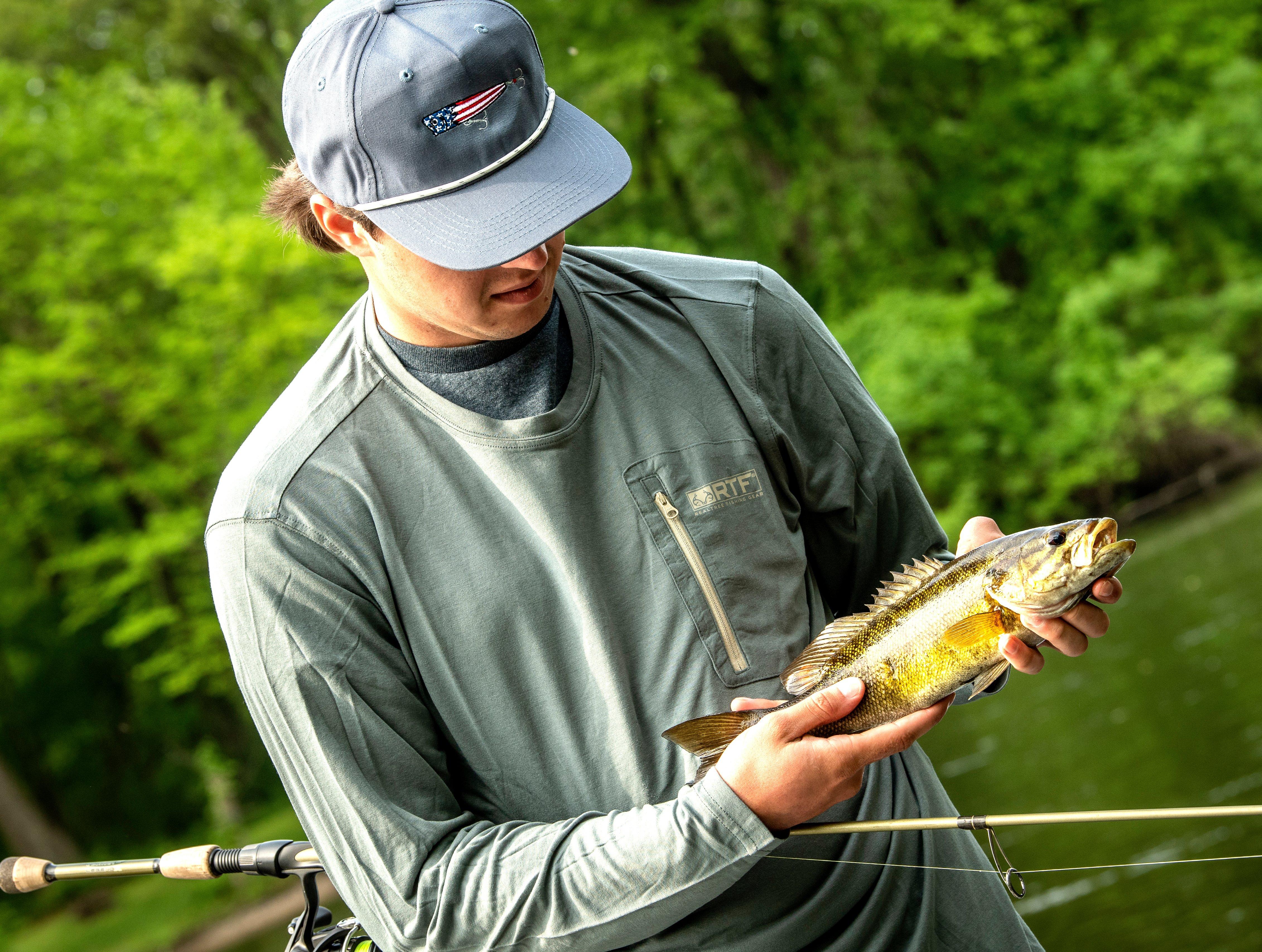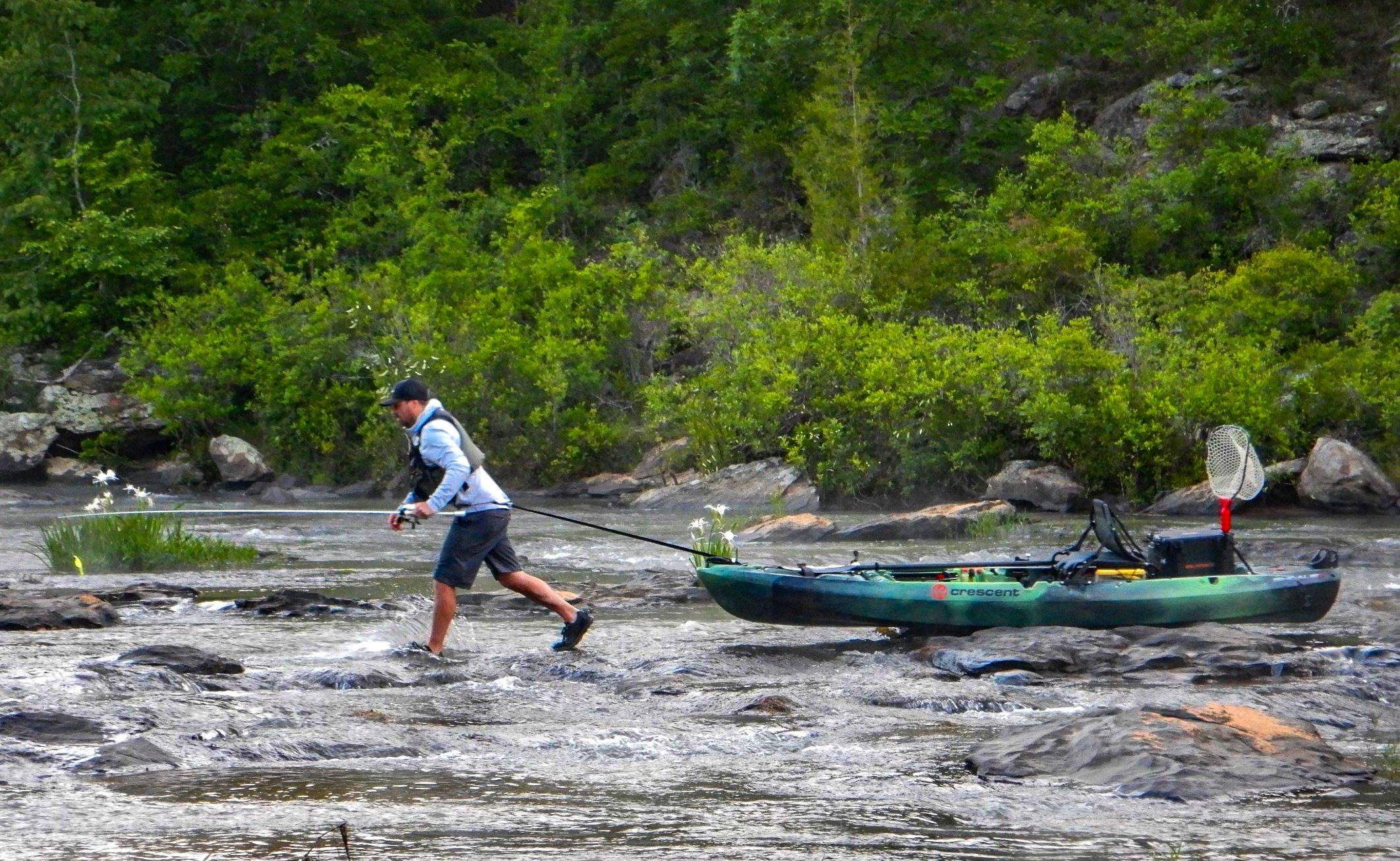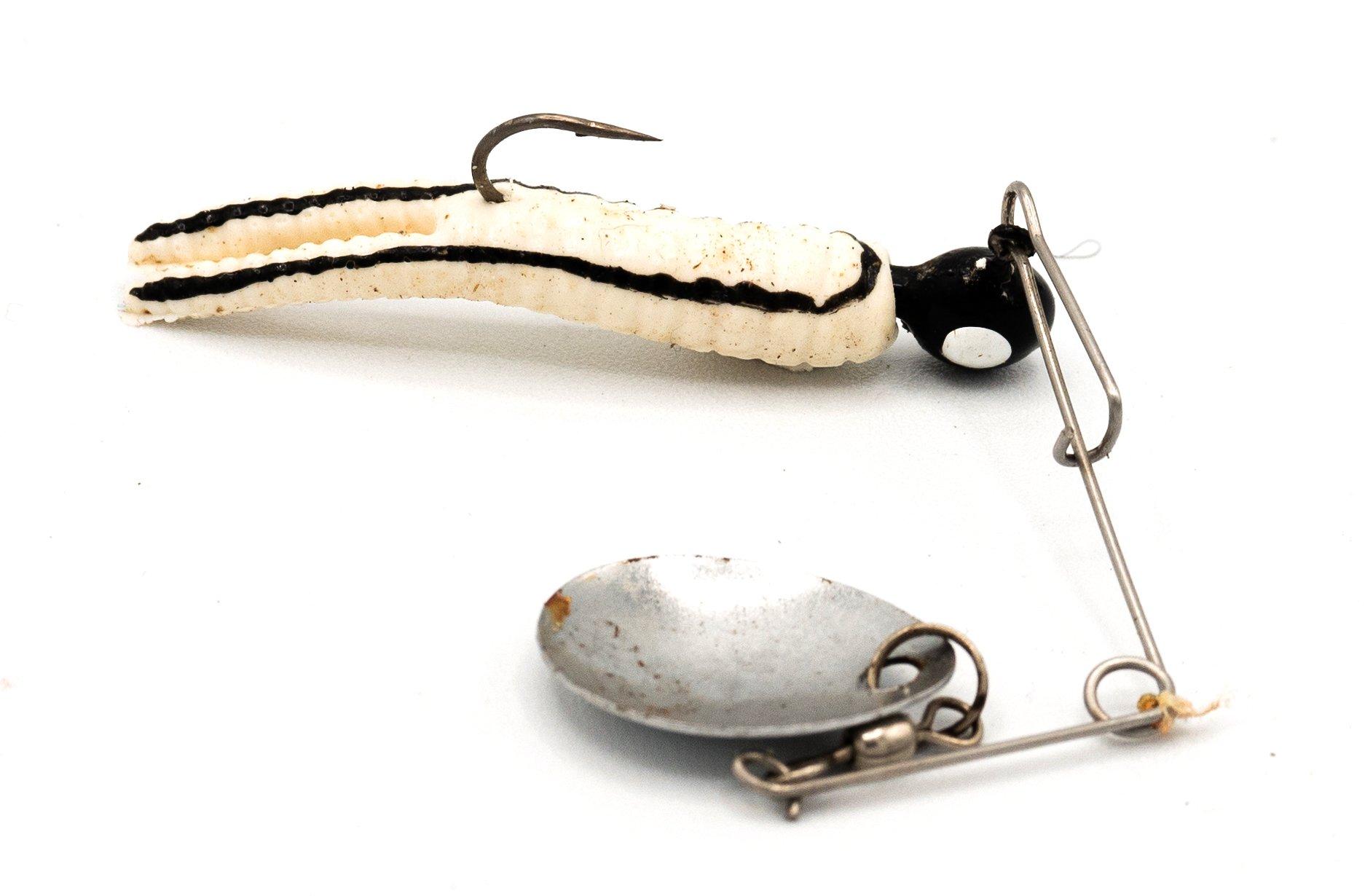Small streams provide great opportunity for multiple species, plus a break from the heat

Creek fishing is at its best in summer, when low water concentrates smallmouths and other species in deeper pools. Image by Bill Konway
My first fishing experience was in a creek, where Mom took my sister and I to catch suckers and chubs, an experience I’d eventually parlay into a side job of selling bait to local customers. Later, I hit the creeks in northern Ohio for summertime smallmouth and winter steelhead. I’ll never forget the surprise when I discovered just how small of a tributary a salmonid species will navigate. I’m sorry now to admit, my first trout catch was by hand, pinning the fish against a logjam in a stream no more than six feet across. The guilt was overwhelming, making me swear to a purist’s fishing etiquette from then on.
Today, creek fishing in Florida finds me fighting stumpknockers and redears on a light spinning outfit. It’s wild fun, with these fish susceptible to artificial lures and as beautiful as anything swimming in freshwater. Tranquility abounds. For most anglers, including myself, creek fishing is a way to get back to your roots.
Still, every time I fish a small stream, I wish I knew more. The experiences are some of the best in fishing. I’m no expert on creek fishing, but I know someone who is. Drew Gregory is a world-champion kayak angler and one of the leading proponents of off-the-grid fishing around America. He’s an original shallow-water angler, comfortable in the smallest boats or knee-deep in a stream.
Don’t Miss: How to Fish for Shellcrackers
SUMMERTIME FUNDAMENTALS

A kayak and a willingness to wade allows Drew Gregory to reach hidden hotspots. Drew Gregory Image
Through his adventures, Gregory has found incredible fishing in streams so small and remote that many don’t have names. Using satellite imagery, Gregory first picks out productive water.
“I use Google Earth Pro,” he admits, for the ability to scroll through past timelines on the imagery service. By doing so, Gregory can study a stream in various pools and stages.
Summertime brings low water, and the need for locating deep holes. Gregory does this through the imagery. “I try to find a period when the leaves are off the trees and I can really see the stream bed. If you can line that up during a period of lower-than-normal water, you can find the deepest holes in the area.”
Gregory stresses the need for deep water, regardless of species, in the summer. Baitfish, bass, panfish, and catfish all inhabit the deepest portion of a stream during summer, especially once waters recede. Sometimes locating holes on outside bends is the answer. Other times, a deeper section of a stream might be less apparent but visible through the eye in the sky.
Productive spots are often spaced out. For that reason, Gregory’s strategy typically involves long floats in his kayak, as much as 15 miles in a day. Covering that much territory requires an angler to fish downstream, which isn’t always ideal in terms of presentation.
When a choice spot is located, Gregory will often wade in to pick the area apart. His Crescent kayak features a 7-foot wading leash that essentially turns the boat into a floating tackle box. Jumping out and wading in allows Gregory to work in the ideal direction: upstream.
“Moving upstream keeps you from announcing your presence, compared to downstream. Bubbles flow downstream; mud flows downstream,” Gregory says. By moving upstream an angler is far stealthier, and makes better presentations.
Speaking of presentations, here is where Gregory goes the extra mile and often enjoys spectacular catches. “The key is to put a lure into places that most people can’t,” he says. “Casting practice will catch more creek fish than anything.”
Don’t Miss: Guide to Summertime Topwater Baits
BIG BASS IN LITTLE STREAMS

Bass tend to tuck against the shoreline just out of the current. Image by Will Brantley
Gregory makes note that most fish in a creek environment position up against the shoreline. This allows them a way to get out of the current and ambush prey. In the case of bass, Gregory notes that each cast must penetrate the object or cover he is fishing, and reach the bank.
“Even when you cast up near an object, rarely does your bait go past the bass. In order to do that, and trigger a trike, the lure must originate from the shoreline.”
In terms of lure choice, Gregory most often relies on a topwater buzzbait or plopper for the majority of his fishing. “Summertime brings low, clear water in an already shallow environment. The fish can see a topwater, so why throw anything else?” Gregory confirms topwaters are both fun and incredibly effective in creeks.
As a backup, Gregory fishes a soft jerk bait, like a Z-Man model, Texas rigged on a weighted hook. These baits are both buoyant and snag-free, allowing skip casts far back into fishy-looking cover. They also make great follow-up lures to bass that strike and miss topwaters.
For all of his fishing, Gregory relies on braided line for its abrasion resistance and direct link to the fish through low-stretch characteristics. Whether in a kayak or wading, he admits that hook-sets are less effective than when fishing on a stable, elevated platform like that of a bass boat, and braid gives him the best chance to connect.
STREAMSIDE PANFISH

A Beetle-Spin is a great search bait for bass and panfish in small creeks. Image by Joe Balog
As Gregory chases tributary bass, I often turn to panfish to fill the summer downtime. Here in Florida, small streams give me the opportunity to get out of the sun, with high tree canopies providing some relief to an otherwise scorching calendar period.
All species of “bream” are the usual targets: redear sunfish, shellcracker, bluegills, and stumpknockers (a warmouth-like fish with a mean attitude). Just as with Gregory’s game plan, I find that deep outside bends hold the most fish, and the presence of wood cover is imperative.
Here it’s important to note: Undercut banks with exposed roots of creek-side timber can be just as productive as large, obvious fallen trees. Panfish feel safest up under cover and they use the exposed banks to hunt invertebrates for food. I’ve caught more bream around root wads than anything else.
Hands down, the best search lure is a Beetle Spin. This tried-and-true bait is really a mini spinnerbait that combines the flash of a small blade with the proven effectiveness of a panfish jig. I quickly find choice locales along the shoreline by casting the spinner on 6-pound test and a light-power spinning rod.
From there, staking out on that spot with a tube jig on a float works well. A long rod helps direct the bait into the tightest nooks and crannies. Often it’s important to drift your offering up under a cut-out bank to get a bite. Sometimes I’ll catch a half-dozen nice panfish from the same exact spot.
Crappies are a bonus, as are small bass, which are always willing to jump and show off. Creek fishing brings an unparalleled freshwater multi-species opportunity, and instantly takes me back to the early days. Mom and I, wading the creeks, looking for chubs. A bread ball on the tiniest of hooks. Worries and obligations not yet in my vocabulary.
What more could we ask from fishing?
Don’t Miss: Do Fishing Tournament Cheaters Deserve Jail Time?










